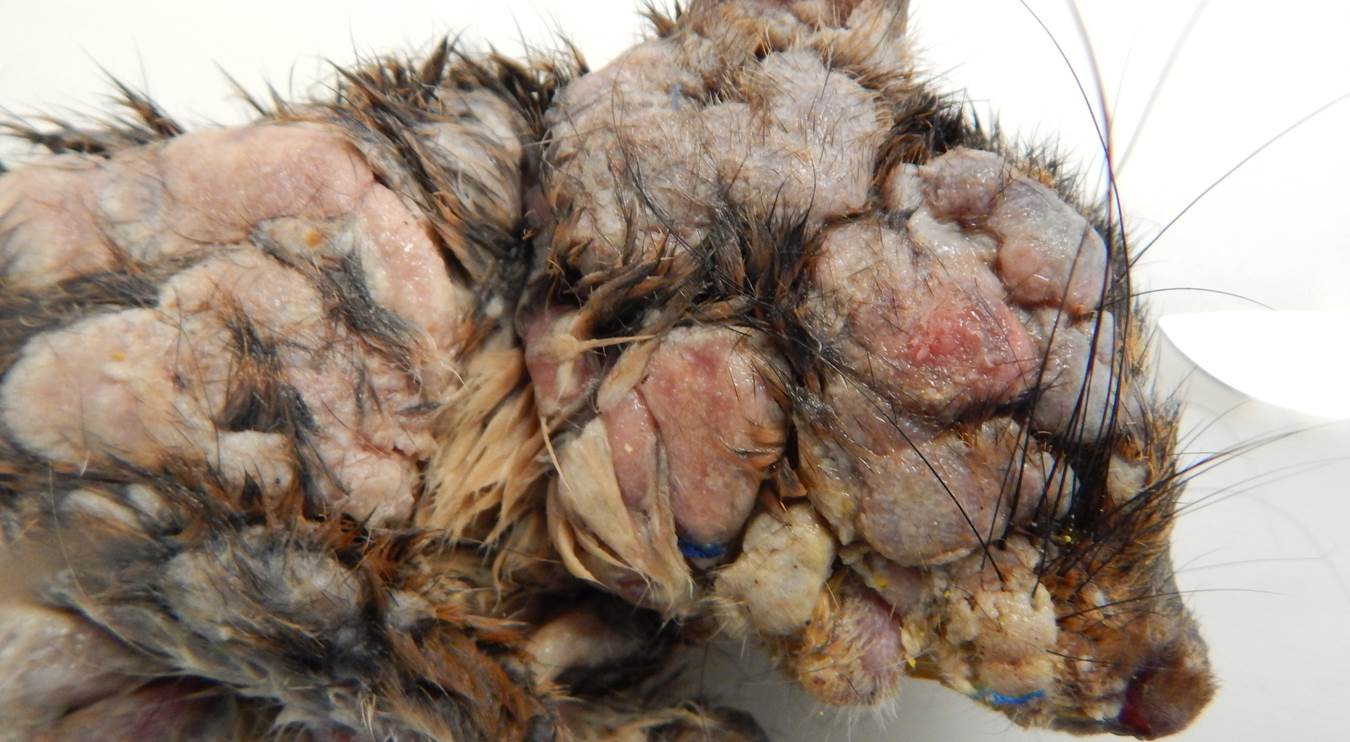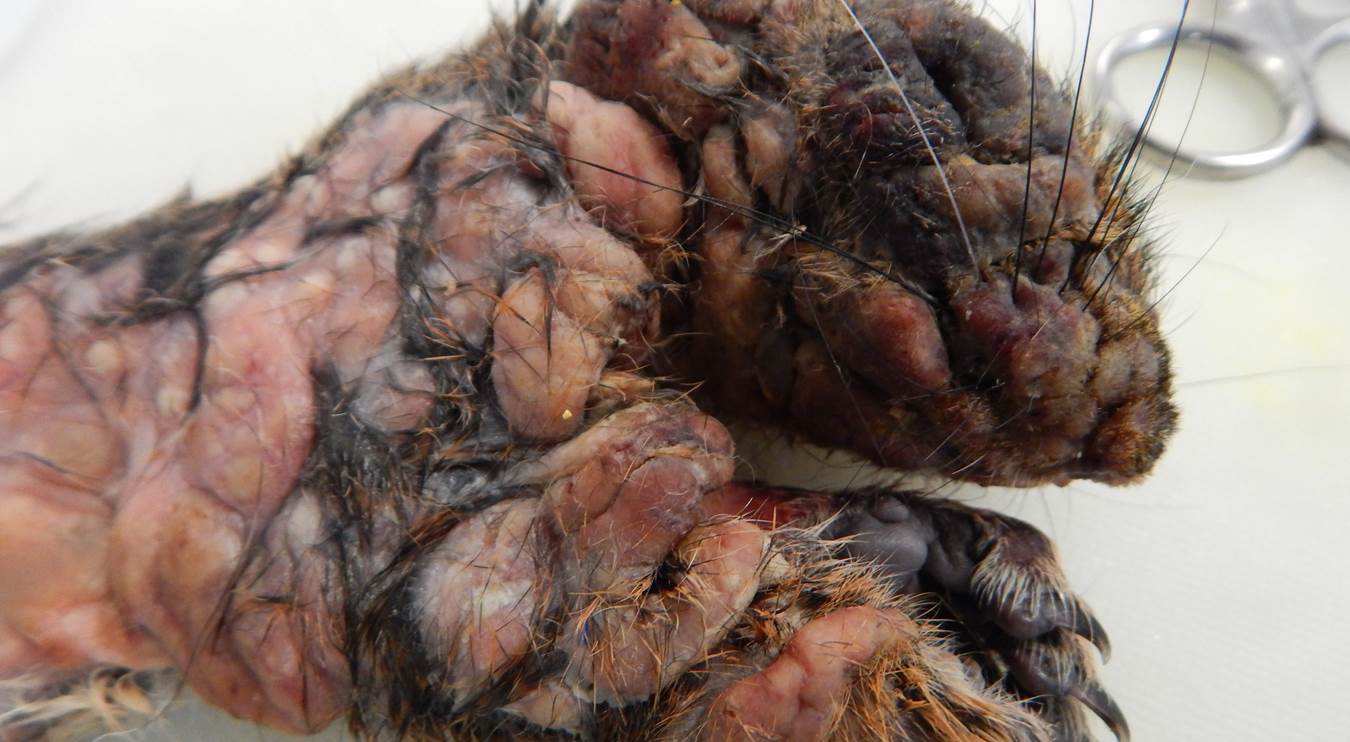Fibromas are fleshy, wart-like growths confined to the skin of animals. They vary in texture (smooth or roughened), size (10mm to 100mm), and color (gray, black, or tan).
Fibromas are caused by poxviruses and papillomaviruses, which are specific to wildlife species. Fibromas can occur on any part of the body but are usually found on the heads and legs of animals.
Fibromas can affect an animal’s vision, feeding, breathing, and movement, depending on their size and location. In addition, abrasions on fibromas can lead to secondary bacterial infections. The growths are generally self-limiting and regress on their own as infected animals mount an immune response. However, in immunocompromised animals, fibromas may progress and invade internal organs.
Fibroma viruses are typically transmitted by insect vectors, such as fleas and mosquitoes, and direct contact with injured skin.
Diagnosis is typically based on visible lesions. Confirmation can be done with histology and isolation of the virus.
There is no treatment for fibromas. Management of fibromas is not warranted because there is little impact on populations of wildlife species. Because the viruses that cause fibromas are species-specific, wildlife fibromas are not transmissible to humans.
Carcasses with fibromas are safe for human consumption if the growths are confined to the skin, and there is no evidence of secondary infections.
In rabbits, fibromas are caused by a poxvirus known as the Shope fibroma virus. Local outbreaks of fibromas commonly occur in eastern cottontail rabbits in the eastern and Midwestern United States.
In squirrels, fibromas are caused by the squirrel poxvirus and occur in gray and fox squirrels, as well as woodchucks. Biting insects are the most common mode of transmission in squirrels. In addition, the virus can be transmitted from mother squirrels to nursing young. Occasionally, outbreaks may cause high rates of mortality among affected squirrel populations. Squirrel pox has been reported in eastern and Midwestern states.
In deer, fibromas are caused by papilloma and poxviruses and are seen in white-tailed deer and mule deer across the United States. Moose are also susceptible. Transmission of deer fibroma viruses is primarily through direct contact of broken skin with infectious viruses as deer rub against each other or vegetation. Fibromas are more commonly seen in male deer suggesting that fighting may play a role in transmission of the virus. Biting insects are also a common mode of virus transmission in deer.




